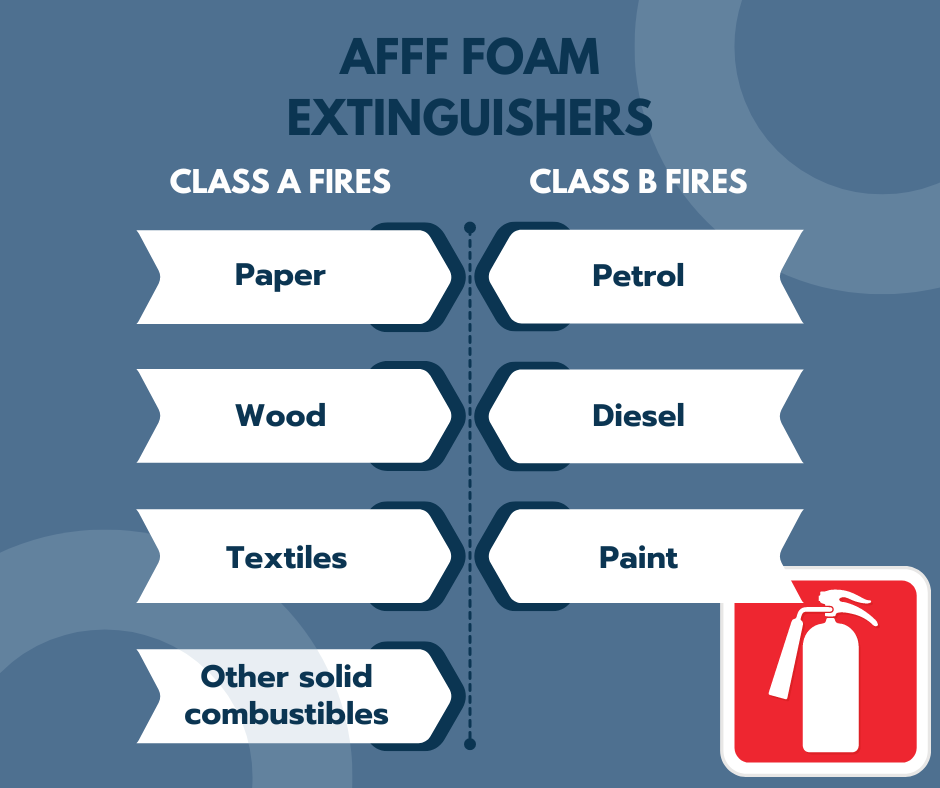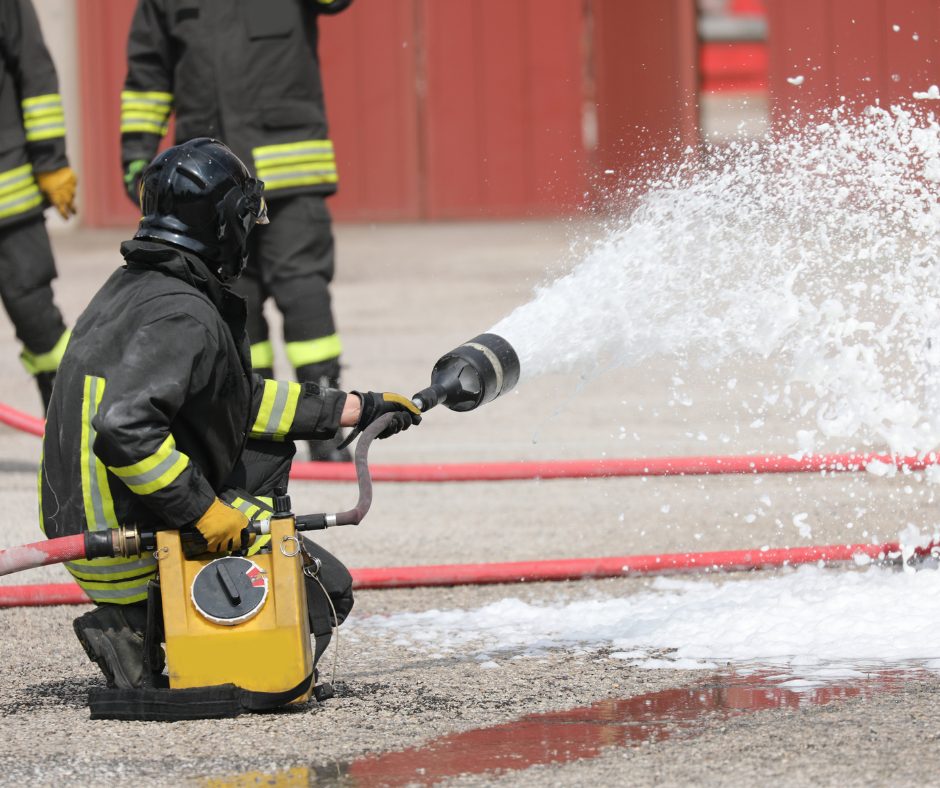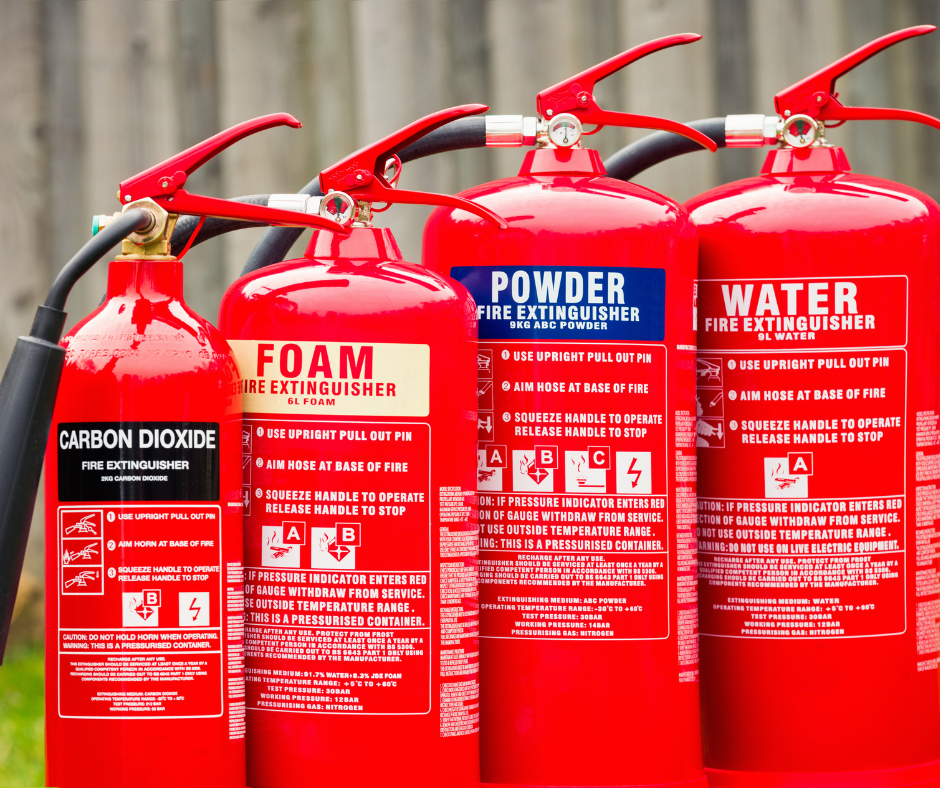Use of certain Aqueous Film Forming Foam (AFFF) fire extinguishers is set to be phased out in the UK, with parliament expected to prohibit the manufacture and sale of these extinguishers before 2026.
This is part of an ongoing phase-out of PFOA (Perfluorooctanoic Acid) and C8 from firefighting products due to the lasting harmful impact on the environment.
What are AFFF foam extinguishers?
 AFFF foam extinguishers are firefighting tools designed to control and extinguish flammable solid fires (class A fires) as well as some flammable liquids, such as petrol, diesel, and paint (class B fires). This is done effectively through the creation of an aqueous film and foam blanket.
AFFF foam extinguishers are firefighting tools designed to control and extinguish flammable solid fires (class A fires) as well as some flammable liquids, such as petrol, diesel, and paint (class B fires). This is done effectively through the creation of an aqueous film and foam blanket.
The foam blanket is made up of water and chemicals that help spread the foam such as Perfluorooctane Sulfonate (PFOA), and other substances. This works by forming a thin aqueous film on the surface of the burning liquid, which suppresses the vapor and effectively isolates the fuel from oxygen, thereby extinguishing the fire.
It also creates a foam blanket acts as a barrier to prevent re-ignition by cutting off the fuel’s exposure to air.
Why are some AFFF foam extinguishers being phased out?
 Some AFFF (Aqueous Film-Forming Foam) extinguishers are being phased out due to environmental and health concerns related to their chemical components, in particular PFOA, PFAS, and C8 compounds.
Some AFFF (Aqueous Film-Forming Foam) extinguishers are being phased out due to environmental and health concerns related to their chemical components, in particular PFOA, PFAS, and C8 compounds.
These are known as “forever chemicals”, a type of chemical that does not break down easily in the environment. They have also been linked to severe health issues, including cancer, liver damage, and developmental problems.
Concerns about “forever chemicals” have been raised since the 1960’s, however despite early warnings its only now the regulations are starting to catch up.
In response to growing concerns over the environmental and health impacts of PFOA and PFAS chemicals, UK environmental agencies and legislative bodies have been moving towards stricter regulations on the use of PFAS-containing products, leading to a phased ban on AFFF.
C8 compounds have not been used since 2016, and are replaced by the C6 compound – any extinguisher manufactured before this ban should replaced with a newer model, and any extinguishers over 10 years old should be replaced as standard.
What can replace AFFF foam fire extinguishers?
 If your fire extinguishers have been regularly serviced and refilled (or replaced) every 5 years, they likely do not contain PFOS, PFOA, or C8 compounds.
If your fire extinguishers have been regularly serviced and refilled (or replaced) every 5 years, they likely do not contain PFOS, PFOA, or C8 compounds.
However, if the extinguisher is very old with no service record or no verifiable refill record then it should be assumed to be potentially containing PFOS or PFOA and environmentally disposed of.
When choosing a replacement for AFFF foam fire extinguishers, we need to consider the types of fire that the extinguisher will be required to tackle and the environment in which it will be used.
F3 are the most closely related eco-friendly alternative to AFFF designed without PFAS & PFOA, making them environmentally safer.
It is as effective as AFFF but without fluorinated surfactants, making it less harmful to the environment. F3 forms a cooling foam blanket that can control Class B and Class A fires without ecological damage.
Other alternatives include Dry Powder Extinguishers which use chemical powders to smother flames and interrupt the chemical reaction of the fire. You can also consider CO₂ Extinguishers that use carbon dioxide gas to displace oxygen and cool the fire, which suppresses it effectively.
How can WA Management help?
WA Management offer Fire Safety and Fire Warden online training courses, along with in-person sessions as part of a bespoke training day for your employees.
Our newsletter also features the latest updates in health and safety legislation – subscribe here to keep on top of regulatory changes!

Environmental Awareness and Resource Efficiency courses can help your workforce gain an understanding of how they can reduce their environmental impact. Make sure you don’t miss out on our 10% off deal on these courses, available until the end of June. Simply enter the code ‘enviro10’ at checkout to save!
Read more Consultant’s blogs here.
To keep up to date with the latest health & safety news and advice, follow us on social media:
